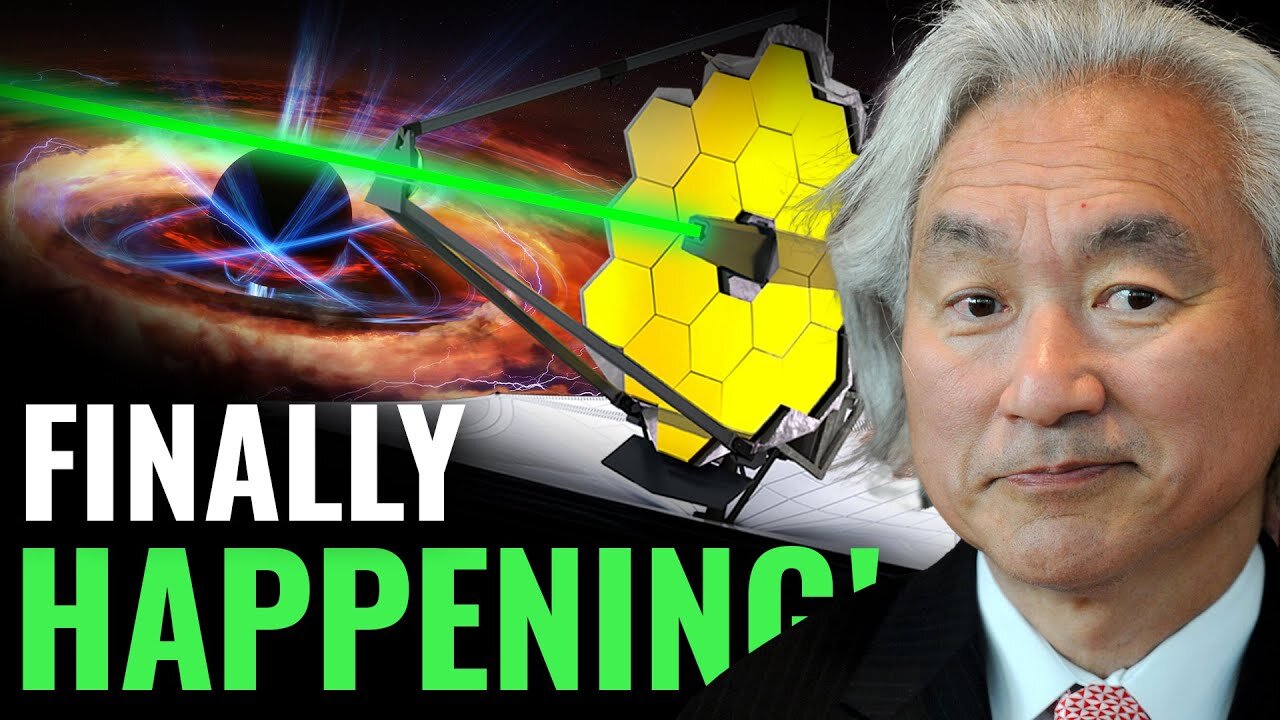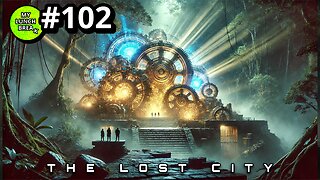Premium Only Content

James Webb Telescope Terrifying Discovery Before Big Bang Will Change Everything!
How did this universe begin? Were we alone in this huge cosmos before the
Big Bang? Just some of the numerous questions that scientists have been
pondering for years, like this one: They planned a slew of projects and
missions to gather as much information as possible about our origins and the
universe we live in, but no technology existed to do it. The James Webb
Space Telescope, a large telescope was then built by scientists and is
expected to help us understand the origins of the cosmos.
The projected Christmas Day 2021 launch of the $10 billion James Webb
Space Telescope was both exhilarating and worrisome for the thousands of
scientists, engineers, managers, and support staff who worked on the project
for almost a decade. The scientific potential of the JWST is vast, and it could
provide answers to some of the most fundamental problems in the universe's
evolution. But the real question is, can this JWST achieve it? Is it possible that
James Webb will be able to see thousands of light-years into the future? We'll
be discussing this in today's video.
But before we begin, kindly subscribe to this channel, like this video, and
enable the notification feature If you haven't already. Come on, let's get
started!
A new era of astronomy is just around the corner, provided everything goes
according to plan. After a nail-biting launch on Christmas Day, the James
Webb Space Telescope (JWST) has launched its mission to capture the birth
of the universe. James Webb Space Observatory will be NASA's largest and
most powerful space research telescope, exploring the cosmos to learn more
about the universe's history, from its Big Bang to the birth of alien planets
and beyond. The observatory will cost $10 billion. It is a part of NASA's Great
Observatories, which comprise the Hubble Space Telescope and other
massive space telescopes that can stare into the universe.
One of JWST's primary goals is the exploration of galaxy formation more than
13.5 billion years before the Big Bang, a hitherto unobserved period of
cosmic history that formed our universe as we know it today. According to
NASA, JWST was built to observe a time in the universe's history that has not
yet been observed before, rather than to study the origins of the cosmos.
We prefer to think of the JWST as a successor to the Hubble Space
Telescope, rather than a replacement. More than 30 years after its launch,
the Hubble Space Telescope has provided us with breathtaking views of the
universe and countless scientific discoveries. It is our hope and expectation
that it will continue for many more years to come.
However, the telescope's 2.4-meter diameter mirror, compared to ground-
based telescopes, limits its sensitivity and ability to observe the faintest
objects. This is a limitation. Even though Hubble can observe infrared light, it
cannot access the light wavelengths from the very first stars and galaxies.
Hubble has some capability to observe infrared light. JWST, on the other
hand, will be able to do this task. For the first time, we may even be able to
observe stars that were generated from primordial material from the Big
Bang.
Knowing when and how the first stars originated soon after the Big Bang is
an important scientific subject and one of the key science aims of JWST.
Carbon, silicon, and gold, which are essential to life and contemporary
technology, were produced in the early stars, but how they did so is still a
mystery to us.
As a result, the design of this observatory has been influenced greatly by the
fact that it needs to be extremely cool to reduce the amount of unwanted
background light.
It's not just the initial stars and galaxies that will be studied by JWST.
Researchers from all over the world can apply for time at this observatory,
which is designed to serve a variety of purposes. Infrared observation will
allow JWST to see through the clouds of dust that enshroud very young stars,
which are impenetrable to the visible light of the telescope.
That means it will be able to see directly into star-forming regions,
something Hubble hasn't been able to do yet. The findings will provide light
on the formation of stars and the systems of planets that orbit them as a
result of the collapse of dust and gas clouds.
Webb will be able to see further into the universe than Hubble, and it will be
far more sensitive. This will allow Webb to go back much further in time and
view the earliest galaxies that formed in the early universe, according to
-
 10:21
10:21
Future Space
2 years agoScientists FINALLY Discovered a NEW Way To Travel Faster Than Light!
73 -
 6:39:16
6:39:16
Akademiks
23 hours agoThis is How Drake Comes Back!! Kendrick First Week Sales in. Diddy, Durk, YSL Update.
304K47 -
 10:29
10:29
TimcastIRL
2 days agoJoe Rogan SLAMS Joe Biden For ESCALATING The War In Ukraine
158K222 -
 14:21
14:21
Scammer Payback
25 days agoHacked Scammer Laptop to find their location
83.1K61 -
 1:07:55
1:07:55
Bright Insight
22 hours agoThis Happened on the JRE Podcast...
244K135 -
 34:52
34:52
MYLUNCHBREAK CHANNEL PAGE
1 day agoThe Lost City
243K114 -
 9:04
9:04
Tundra Tactical
21 hours ago $31.72 earnedTrump's AG Pick Pam Bondi is TROUBLE!
131K60 -
 1:02:02
1:02:02
PMG
1 day ago $21.81 earned"Man Films FBI Coming to His Home Over Alleged Social Media Posts - Jeremy Kauffman"
95.8K17 -
 23:21
23:21
Stephen Gardner
1 day ago🔥Trump DISCOVERS exactly who BETRAYED Him!!
202K704 -
 11:04
11:04
Silver Dragons
1 day agoCoin Dealer Exposes the "German Silver" Scam & MORE
111K26